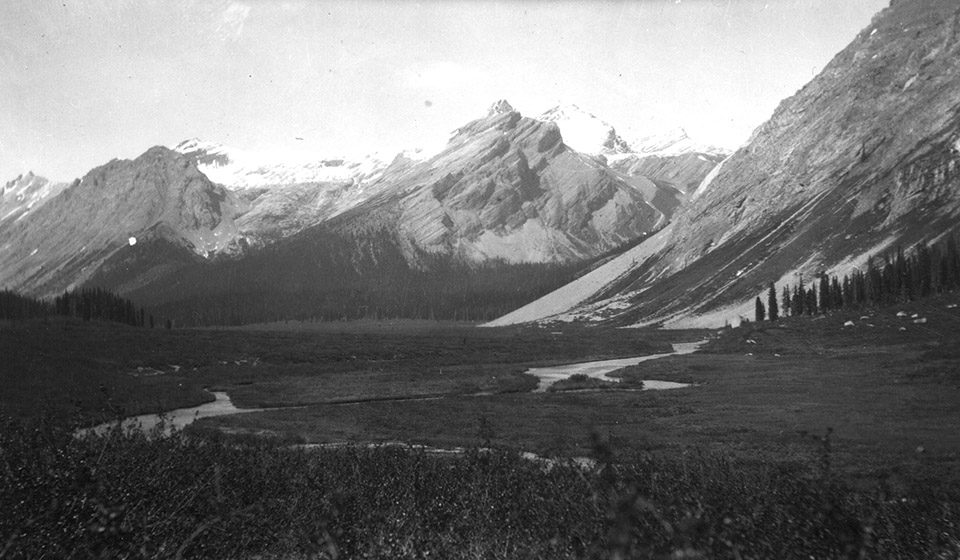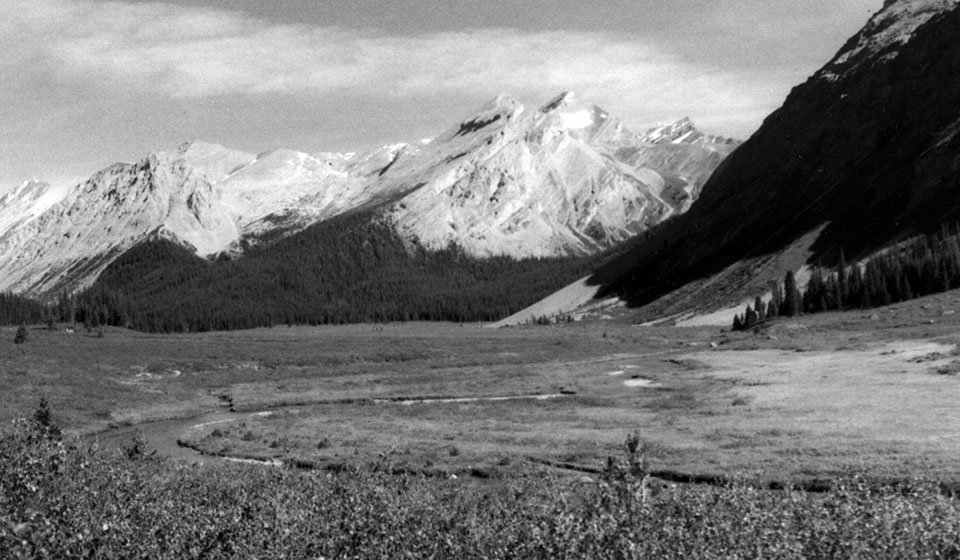Banff’s Last Buffalo
On August 26, 1859 James Hector and his party of the Palliser Expedition ascended the upper Pipestone Valley: “we reached within a few miles of the ‘divide’ we had to cross, and camped opposite to a waterfall which forms the source of Pipe Stone Creek and where the stream leaps and rushes down a gutter-like channel.” This description fits the terrain at Singing Meadows. That night William explained that “two years ago he killed a buffalo cow at this place, and at the time saw a band of seven– two bulls, four cows, and calf. They were of the thick-wood variety, which are larger and blacker, and with more spreading horns, than those of the prairies.” 1 This observation was likely one of the last of a living, free-roaming bison in Banff National Park, although the next day Hector saw bison tracks near Pipestone Pass. By 1881, intensive hunting totally killed out bison herds on the plains and foothills. These populations were the main sources of the bison that periodically entered the mountains.2
Singing Meadows changed little in the over 70 years between the images. A few old snags originating from a low intensity fire in the 1850s or 60s (possibly lit by the Stoney Nakoda), visible in the earlier photograph, were still standing in 1986. Shrub birch and willow remained common in the meadow, but a few spruce and pine had begun to reach 3 to 5m in height due to a lack of fire. Near here, Hector’s Stoney guide shot 5 mountain goats to fill the larder, and in the 1980s goats were still commonly seen on the cliffs on the right-hand side of the picture.
Map and Footnotes
- Spry, I. M., ed. The Papers of the Palliser Expedition, 1857–1860. Toronto: Champlain Society, 1968, p. 441 ↩
- Langemann, E. G. “Zooarchaeological Research in Support of a Reintroduction of Bison to Banff National Park Canada.” Conference of the International Council of Archaeolzoology 9 (2002): 79–89; Kay, C. E. and C. A. White. “Reintroduction of Bison into the Rocky Mountain Parks of Canada: Historical and Archaeological Evidence.” George Wright Society Annual Conference on Research and Resources in Parks and on Protected Lands 11 (2001): 143–51. ↩

